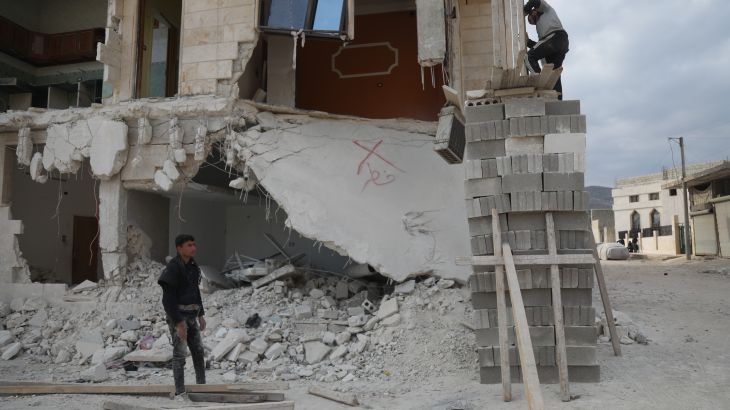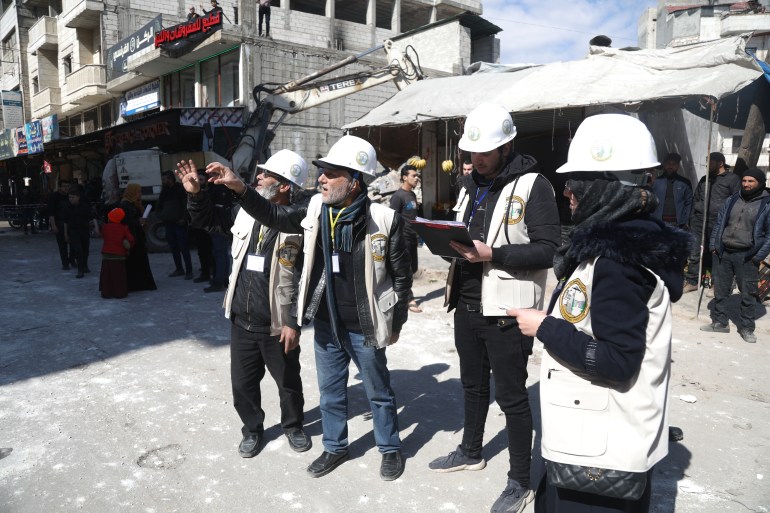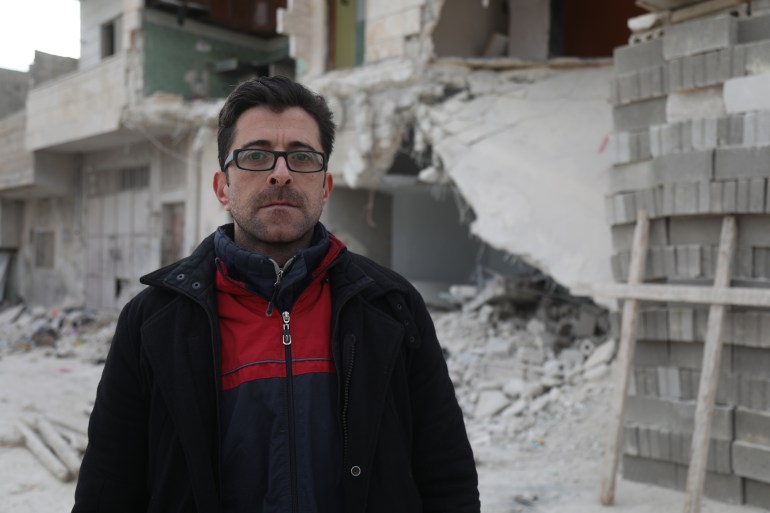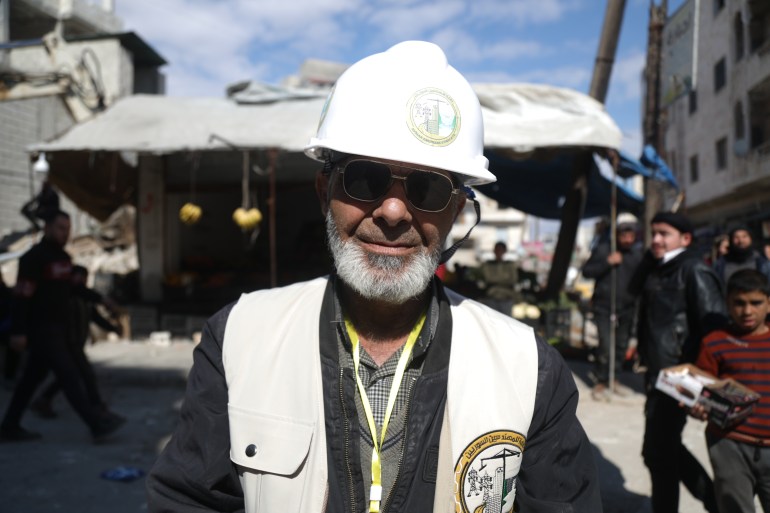Engineers count cost of rebuilding in quake-hit, war-weary Syria
Demolish or repair? Teams assess structures in the northwestern region where infrastructure was already dilapidated.

Idlib, Syria – Engineers have been painstakingly assessing the safety of buildings in northwestern Syria, which was devastated by earthquakes this month after years of conflict and bombardments that had already destroyed homes and hospitals.
Since the first earthquake struck the Turkey-Syria border region on February 6, hundreds of families in Idlib have been sheltering on agricultural land. Their homes were either flattened or so damaged that they were rendered uninhabitable.
Keep reading
list of 3 itemsPanic injures many as traumatised Syria hit by new earthquakes
Survivors in Turkey say ‘new normal’ is coping with more quakes
The Idlib authorities have said that more than 100 cities, towns and villages in that region alone were affected, with 812 buildings demolished and 5,937 damaged.
The Syrian Engineers Association in Idlib is working with the local administration to check buildings that are still standing after the earthquakes and thousands of powerful aftershocks.

“About 20 buildings [several storeys high] are inspected daily by the engineering committee,” said civil engineer Mustafa Haj Lattouf, who heads one of the structural safety committees in Idlib. They check about 40 houses a day as well.
Ammar Abdul Qayyum, who had to flee his home after the temblors, said: “About half of my house was destroyed as a result of the earthquake, in addition to the cracks in the rest of the remaining walls, and it is no longer habitable.”
The 44-year-old, who has four children and is from Kafar Takharim city in Idlib, told Al Jazeera that he is currently living with relatives. His own home will take a long time to repair, and that, too, at an exorbitant cost.

Lattouf said the engineers began their work the morning after the first earthquake, submitting reports to the authorities after each inspection to “clarify whether it is habitable, whether it must be destroyed, or if the home needs reinforcement”.
The task is delicate. Lattouf told Al Jazeera that some buildings are clearly inclined, so the committee draws a topographical layer to determine the extent of the structure’s verticality. If the slope is too steep then a decision is taken immediately to destroy it.

“A committee of engineers came to us to assess the situation of the building, and they told us that the building is in good condition, but it needs restoration and consolidation before returning to it,” Abdul Qayyum told Al Jazeera.
“It is very difficult to see the house that I put all my life savings to purchase in its current condition, but what relieved me is that my family was not harmed by any means.”
On Monday night, two new earthquakes rattled the area. The head of Turkey’s Disaster and Emergency Management Presidency said six people died and 294 were injured. Opposition-run rescue group the White Helmets, also known as the Syrian Civil Defence, said more than 190 people were injured and several damaged buildings collapsed.
“We haven’t had a chance to catch our breath, gather our strength and improve our psyche yet to get impacted by another earthquake which hit us yesterday,” said Ahmed Arour, from Armanaz city in the western countryside of Idlib.
“The new earthquake brought us back more fright and weakness than before,” the 30-year-old told Al Jazeera.

Arour, who has four children, said that since the first earthquake on February 6, he and his family went to one of the camps near the town, where five to six families live in tents, and that he has not returned to his home since. His house is still habitable despite some damage.
“When we left the house, we witnessed a number of nearby buildings collapsing, and as a result, I lost many of my neighbours,” Arour said. “I can’t see myself ever going back to live in my house after the earthquake. I do not want what happened to my neighbours to happen to my family.
“Our hearts can no longer bear it, as with every aftershock, a state of panic and fear afflicts the camp’s residents,” he added.